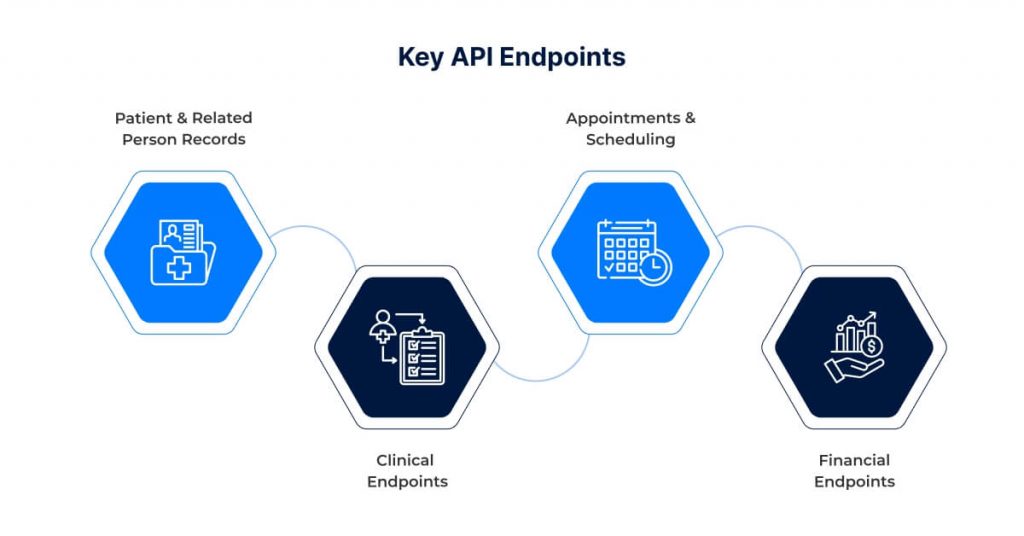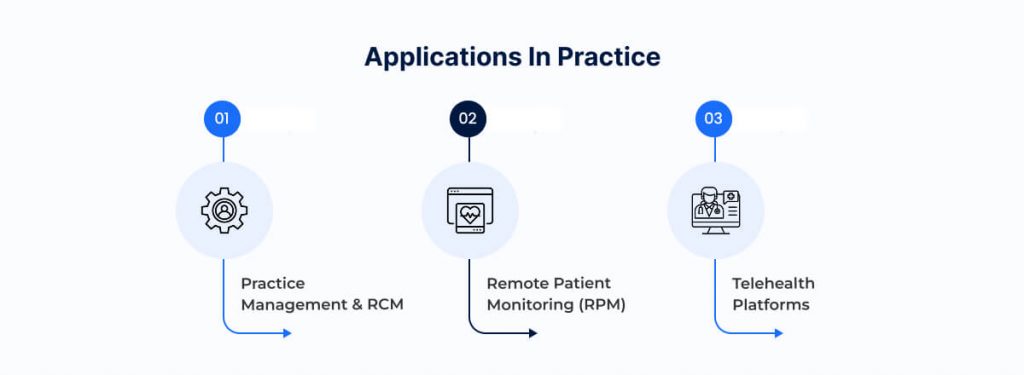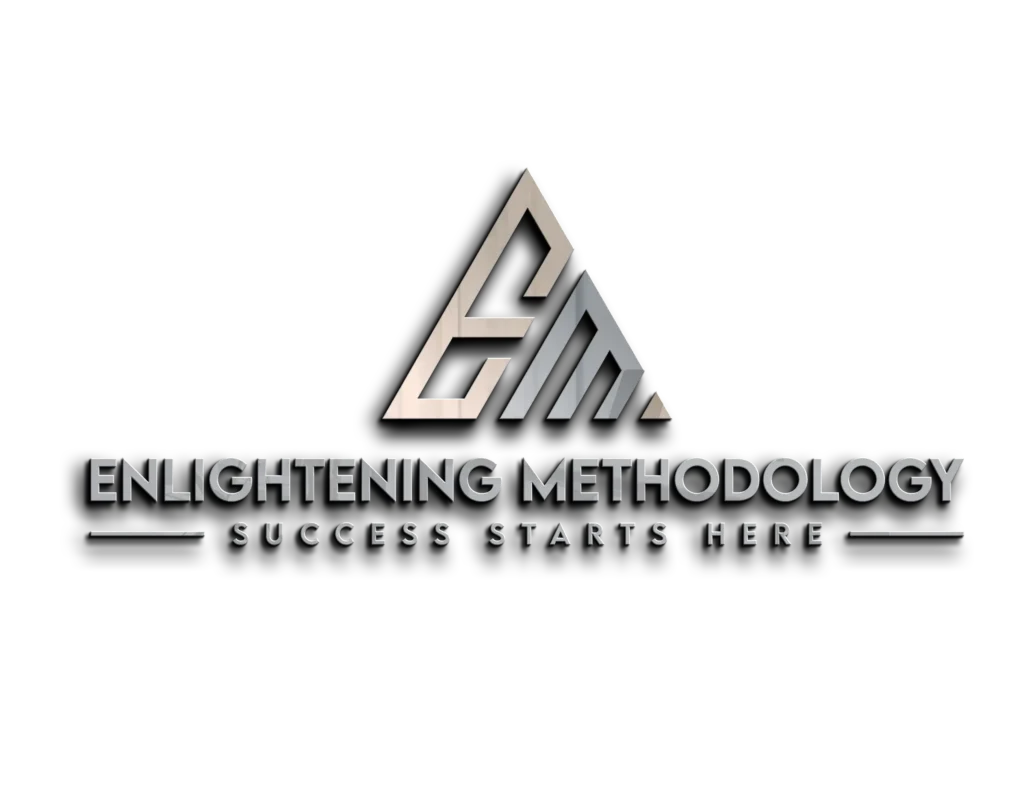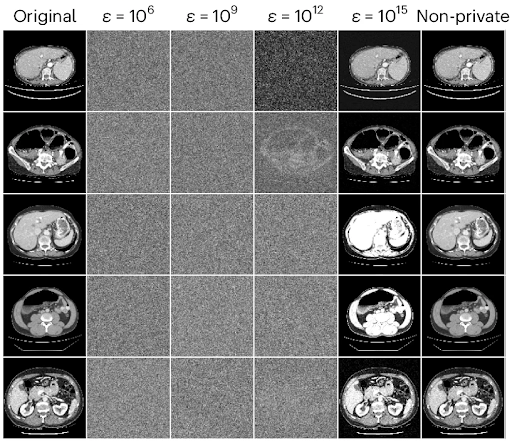Introduction
As of 2025, Oracle Health (formerly Cerner) holds approximately 22.9% of the U.S. acute care hospital EHR market, highlighting its prominence in healthcare IT. This widespread adoption underscores the importance of Cerner EHR/EMR integration with health apps in enhancing clinical workflows, streamlining patient data access, and improving operational efficiency. Custom-integrated health applications enable seamless information exchange with EHR and EMR systems, supporting patient management, clinical documentation, scheduling, and revenue cycle management. For developers, healthcare IT teams, and organizations building mobile health apps that integrate with Cerner, understanding the technical, operational, and compliance considerations is crucial to ensuring reliable and secure interoperability.
Technical Foundations of Cerner Integration

Cerner provides multiple integration pathways, including FHIR APIs, SMART on FHIR, and traditional HL7 interfaces. These pathways allow health applications to interact with critical healthcare data objects, including patient records, clinical documentation, appointment schedules, and financial data. By combining modern FHIR standards with HL7, Cerner ensures bidirectional, real-time interoperability while remaining consistent with widely accepted healthcare data models. These standards enable developers to retrieve and submit patient information, clinical notes, scheduling data, and billing records, allowing applications to function seamlessly within the Cerner EHR/EMR ecosystem.
Key API Endpoints

A successful Cerner EHR/EMR integration with your health app depends on accurately understanding and utilizing key API endpoints. These endpoints support clinical and administrative workflows and provide the foundation for secure and efficient data exchange:
- Patient and Related Person Records: Manage demographics, patient profiles, and caregiver information.
- Clinical Endpoints: Access observations, conditions, and medication requests to facilitate documentation and care coordination.
- Appointments and Scheduling: Handle appointment creation, scheduling, and resource management to ensure timely patient care.
- Financial Endpoints: Claim and Coverage APIs support billing automation and medical billing, enabling efficient revenue cycle management.
Understanding these endpoints ensures applications can retrieve, process, and submit data reliably while maintaining seamless workflows across clinical and administrative operations.
Integration Pathways

Health apps can integrate with Cerner using multiple pathways, each suited to specific requirements. The primary approaches include:
- Direct API Integration: Applications communicate directly with Cerner FHIR endpoints for minimal latency and real-time data access. This method requires careful handling of authentication, error management, and data transformation to maintain interoperability.
- HL7 Interface Integration: Legacy or specialized systems often rely on HL7 v2/v3 interfaces to support laboratory, radiology, or pharmacy workflows. Integration engines manage message routing and transformation to maintain compatibility with EMR/EHR standards.
- SMART on FHIR Embedded Applications:Apps embedded within the Cerner EHR interface gain context-aware access to patient and encounter data. This approach enhances clinical decision support, workflow efficiency, and user experience by keeping functionality within the clinician’s workflow.
Testing and Validation

Rigorous testing ensures Cerner integrations perform reliably in clinical environments. Essential testing dimensions include:
- Unit and Integration Testing: Validate individual API endpoints and multi-endpoint workflows to ensure correct functionality.
- Data Mapping and Transformation Validation: Confirm health app data models align with Cerner FHIR resources, addressing variations in coding systems, units, and documentation standards.
- Performance and Load Testing: Ensure compliance with API rate limits, maintain reliable operation under both normal and peak usage, and implement retry, throttling, and caching strategies to enhance robustness.
Comprehensive testing minimizes errors, ensures patient safety, and supports operational efficiency.
Challenges and Mitigation Strategies

Integrating with Cerner presents several technical, business, and compliance challenges:
- Technical Hurdles: API rate limits, variability across healthcare systems, and data standardization issues require configurable integration approaches, robust error handling, and fallback strategies.
- Business Considerations: Costs associated with integration, vendor relationships, and contractual complexities can affect project timelines and ROI. Transparent planning, tiered API usage, and early stakeholder alignment help manage these risks.
- Compliance and Security: HIPAA-compliant software development, audit logging, and consent management frameworks are crucial for protecting patient data and meeting regulatory requirements.
Addressing these challenges systematically ensures that integrations are secure, reliable, and maintainable.
Applications in Practice

Real-world implementations demonstrate the measurable benefits of Cerner integration:
- Practice Management and RCM: Practice management solutions automate claim submission, denial management Systems, and eligibility verification, which can reduce claim losses by 55% and accelerate reimbursement cycles, improving financial visibility without disrupting clinical workflows.
- Remote Patient Monitoring (RPM): Integrating Remote Patient Monitoring solutions with Cerner enables the automated ingestion of device data, clinical alerts, and continuous monitoring. Organizations report a 65% improvement in outcomes for chronic conditions and a 30% reduction in hospital readmissions.
- Telehealth Platforms: Combining scheduling, patient data exchange, automated documentation, and compatibility with Epic systems enhances patient engagement, improves home care experiences, and increases billing accuracy by 35%.
These examples illustrate how a structured Cerner integration solution improves operational, clinical, and financial performance.
Educational Approach to Implementation

A structured approach ensures reliable and secure Cerner integration:
- Complete Lifecycle Management: Covering discovery, planning, deployment, testing, and ongoing maintenance.
- Standardized Frameworks and Accelerators: Reusable integration patterns reduce complexity and maintain technical consistency.
- Compliance and Data Security: HIPAA-compliant development and robust access controls protect sensitive data.
- Workflow Optimization: Integration should streamline clinical and administrative processes to enhance efficiency and patient care.
By applying this methodology, organizations balance technical rigor, regulatory compliance, and operational value while ensuring a secure and efficient integration process.
Conclusion
Integrating Cerner EHR/EMR systems with health applications presents an opportunity to enhance data accessibility, clinical workflow efficiency, and operational performance. Custom health apps integrated with Cerner, combined with careful planning, rigorous testing, and adherence to compliance standards, enable healthcare organizations to fully leverage the benefits of interoperability.Structured implementation strategies, standardized frameworks, and workflow optimization ensure healthcare applications remain secure, efficient, and capable of supporting high-quality patient care. By following a structured, educational, and compliance-focused methodology, organizations can maximize clinical and operational outcomes while mitigating risks associated with EHR/EMR interoperability. The $30.1 billion market projection reinforces growth and validates the business value of EHR integration, making it a strong closing point.
References
- https://www.ifaxapp.com/blog/cerner-fhir/
- https://www.mindbowser.com/cerner-integration-pros-and-cons/
- https://spsoft.com/tech-insights/guide-to-mastering-cerner-integration/
- https://www.invene.com/blog/cerner-ehr
- https://www.clarity-ventures.com/articles/cerner-ehr-integration-clarity
The post How to Implement Cerner EHR/EMR Integration with Your Health App System appeared first on Osplabs.











